Tiona Nekkia McClodden
THE POETICS OF BEAUTY WILL INEVITABLY RESORT TO THE MOST BASE PLEADINGS AND OTHER WILES IN ORDER TO SECURE ITS RELEASE
26 May - 13 Aug 2023
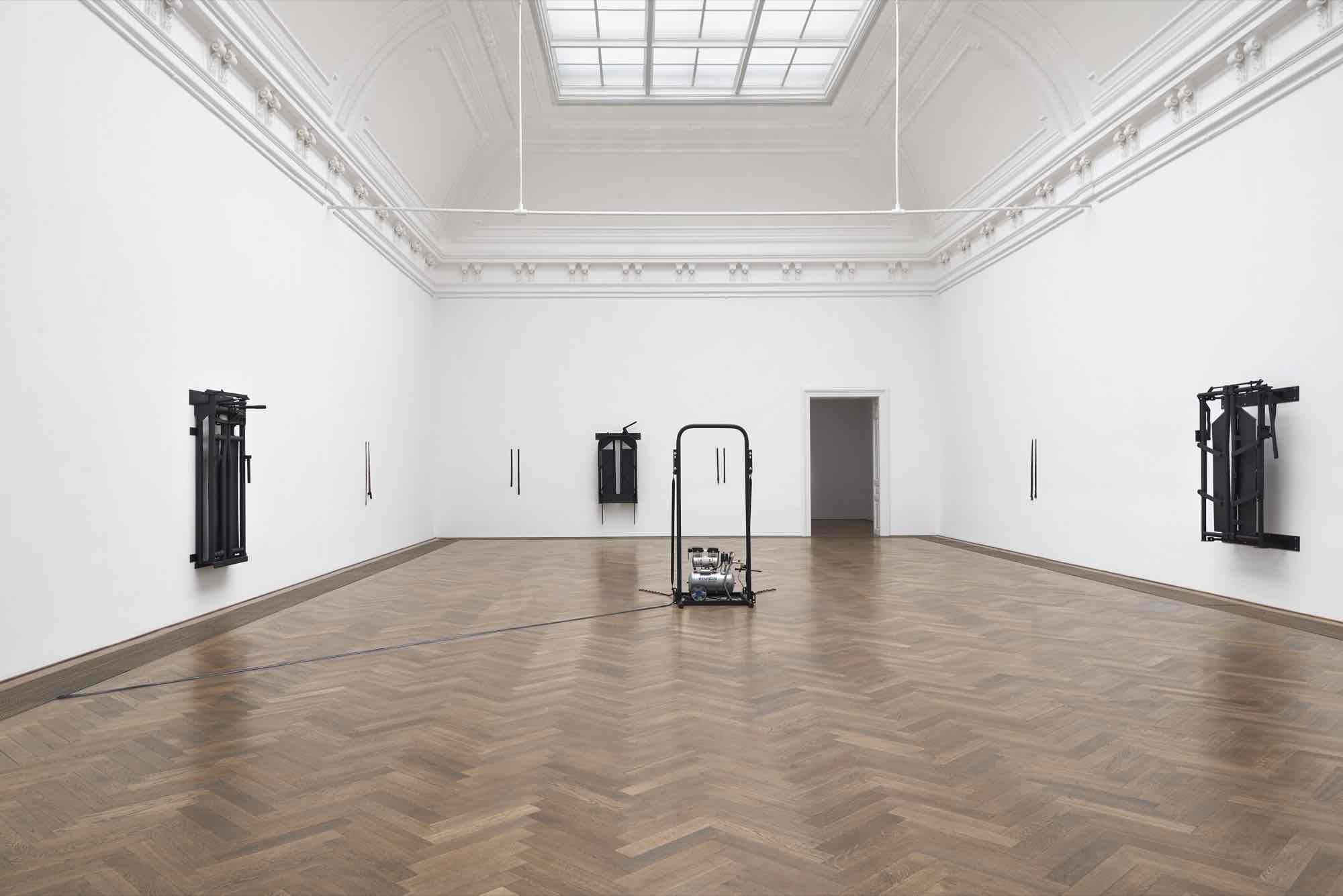
Tiona Nekkia McClodden, THE POETICS OF BEAUTY WILL INEVITABLY RESORT TO THE MOST BASE PLEADINGS AND OTHER WILES IN ORDER TO SECURE ITS RELEASE, Kunsthalle Basel, 2023, exhibition view, photo: Philipp Hänger / Kunsthalle Basel
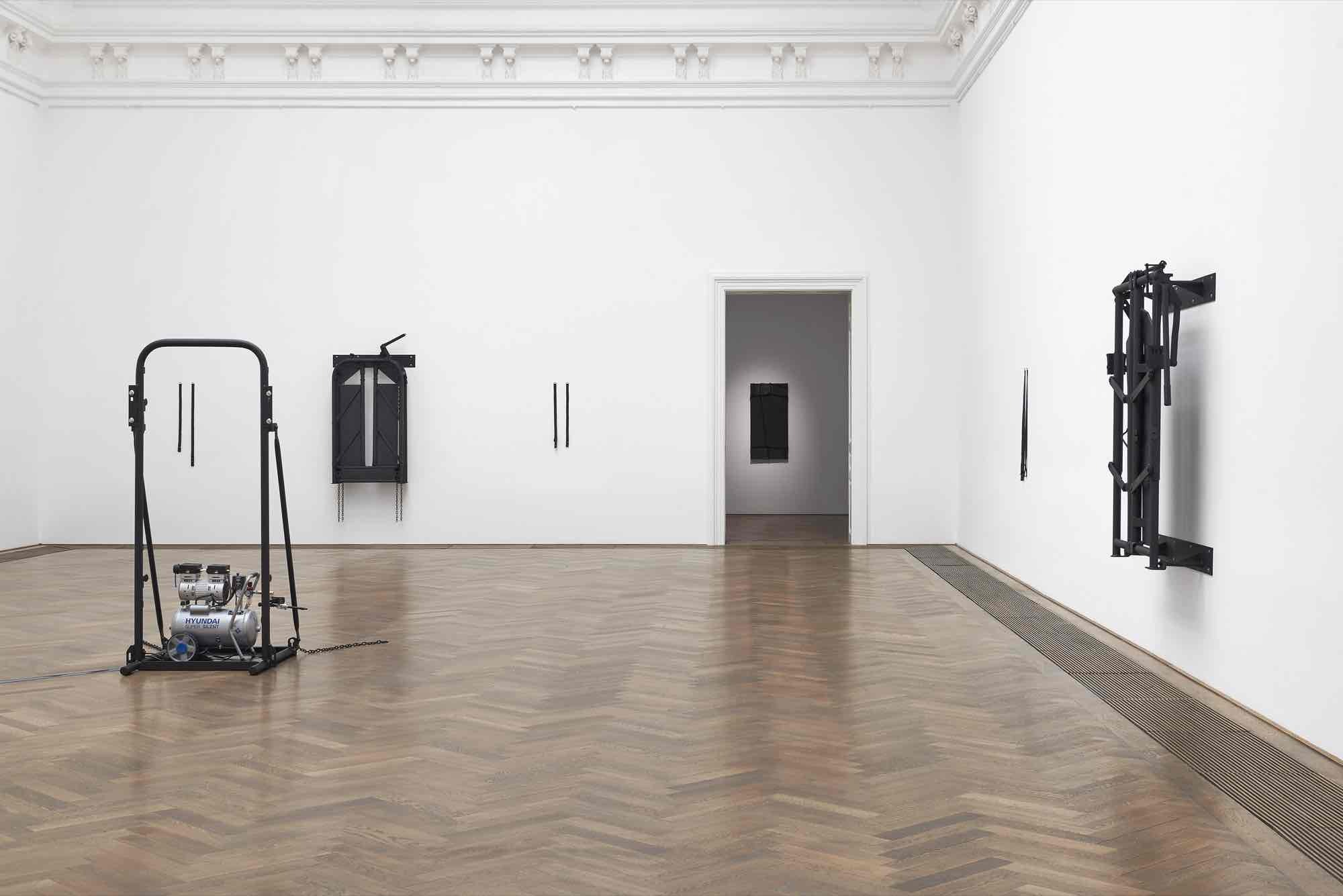
Tiona Nekkia McClodden, THE POETICS OF BEAUTY WILL INEVITABLY RESORT TO THE MOST BASE PLEADINGS AND OTHER WILES IN ORDER TO SECURE ITS RELEASE, Kunsthalle Basel, 2023, exhibition view, photo: Philipp Hänger / Kunsthalle Basel
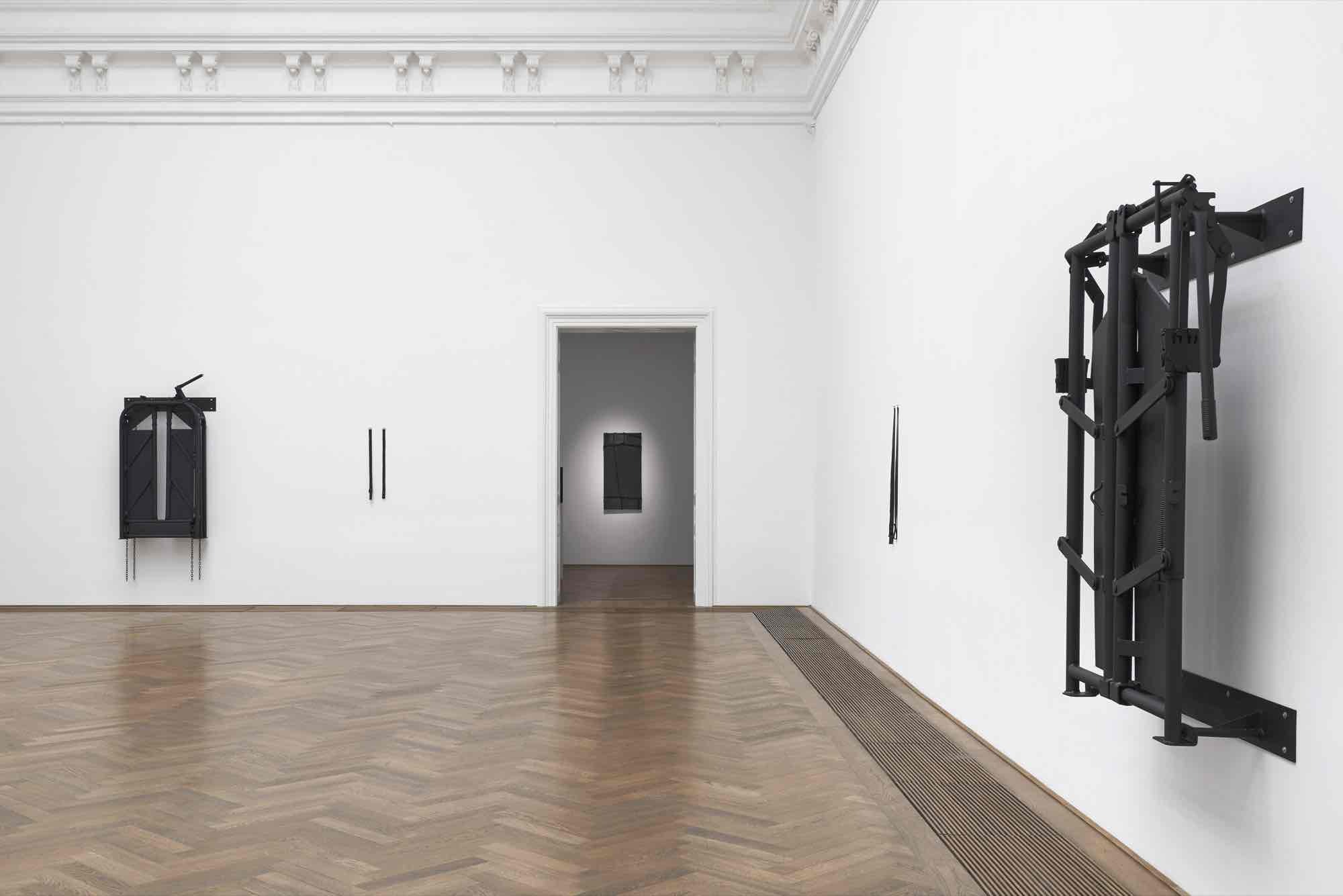
Tiona Nekkia McClodden, THE POETICS OF BEAUTY WILL INEVITABLY RESORT TO THE MOST BASE PLEADINGS AND OTHER WILES IN ORDER TO SECURE ITS RELEASE, Kunsthalle Basel, 2023, exhibition view, photo: Philipp Hänger / Kunsthalle Basel
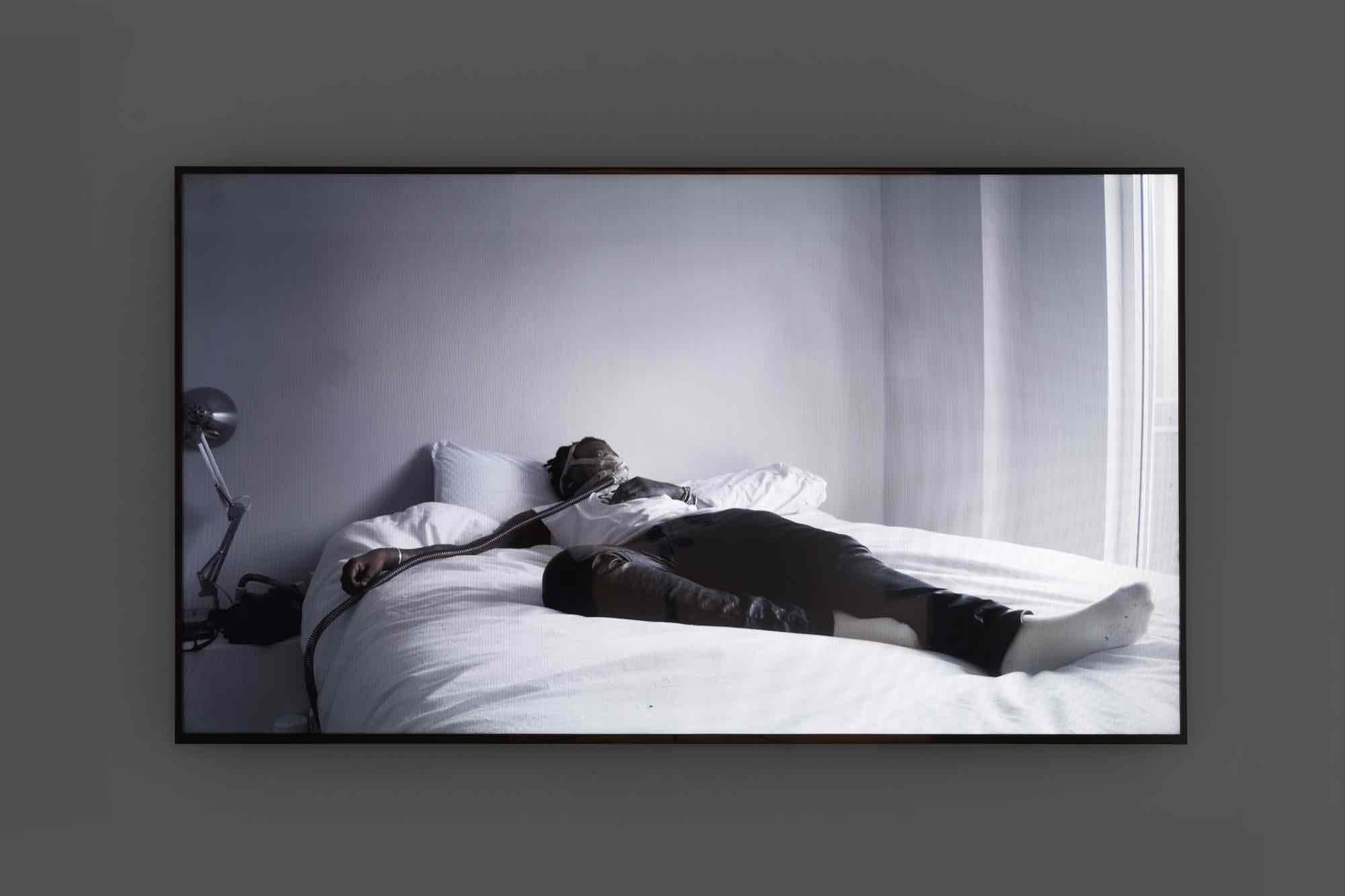
Tiona Nekkia McClodden, DOUBLE BIND, 2023, video, installation view, in: Tiona Nekkia McClodden, THE POETICS OF BEAUTY WILL INEVITABLY RESORT TO THE MOST BASE PLEADINGS AND OTHER WILES IN ORDER TO SECURE ITS RELEASE, Kunsthalle Basel, 2023, photo: Philipp Hänger / Kunsthalle Basel
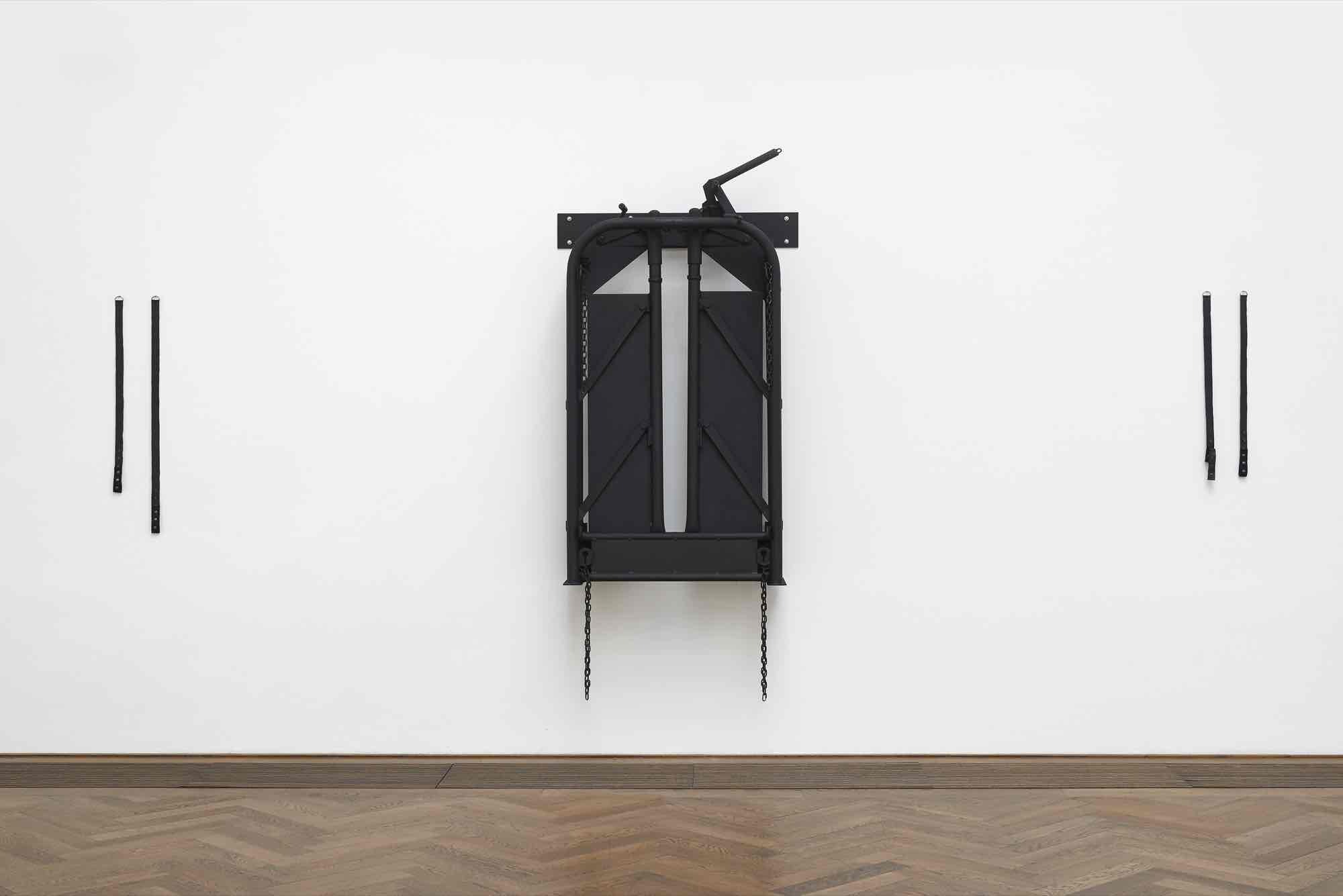
Tiona Nekkia McClodden, THE POETICS OF BEAUTY WILL INEVITABLY RESORT TO THE MOST BASE PLEADINGS AND OTHER WILES IN ORDER TO SECURE ITS RELEASE, Kunsthalle Basel, 2023, exhibition view, central: A MERCY IV, 2023, left and right: THRASHER [I-XVI], 2023, photo: Philipp Hänger / Kunsthalle Basel
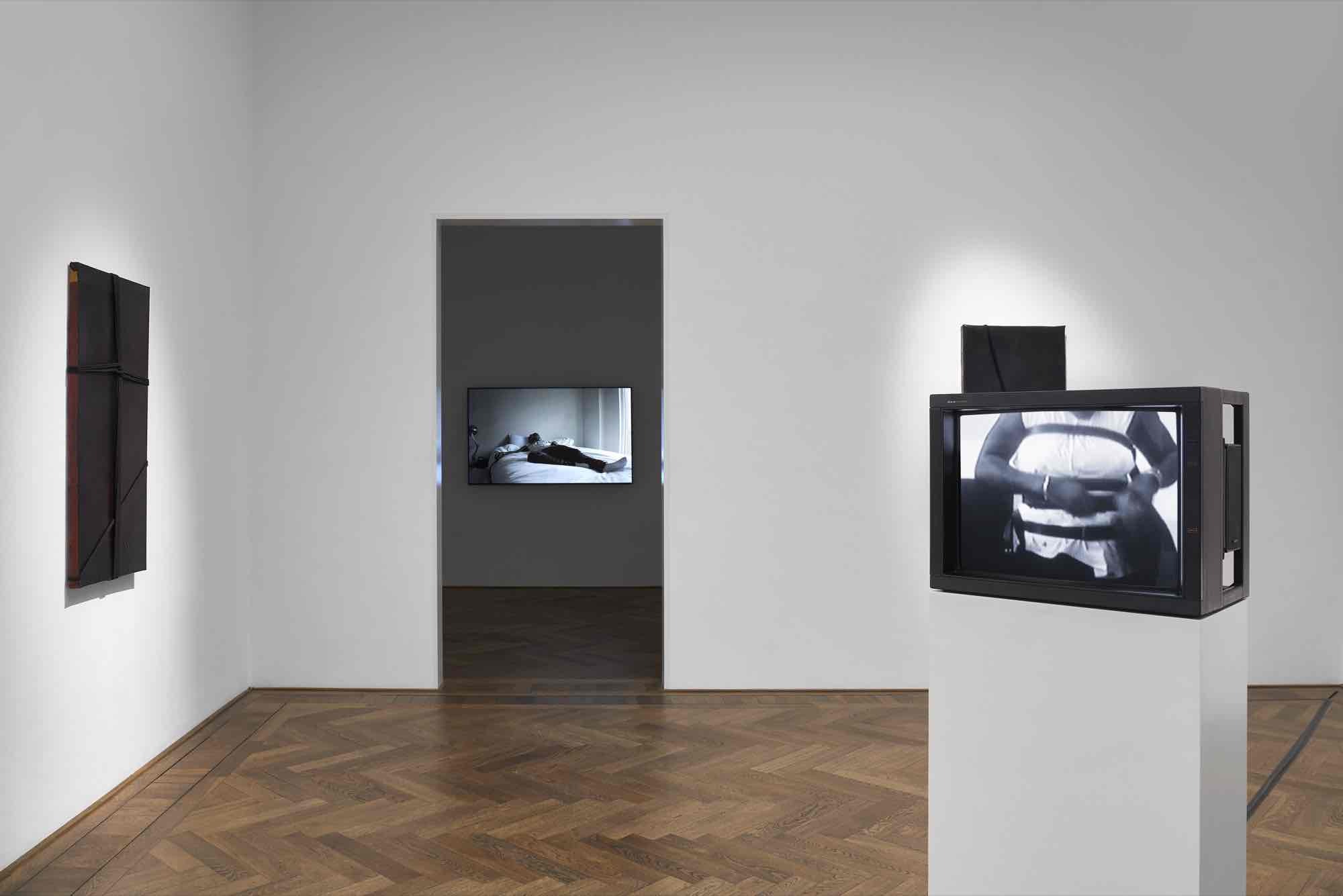
Tiona Nekkia McClodden,THE POETICS OF BEAUTY WILL INEVITABLY RESORT TO THE MOST BASE PLEADINGS AND OTHER WILES IN ORDER TO SECURE ITS RELEASE, Kunsthalle Basel, 2023, exhibition view, left to right: NEVER LET ME GO / III. a visage; DOUBLE BIND, and DIRE / RETENUE, all 2023, photo: Philipp Hänger / Kunsthalle Basel
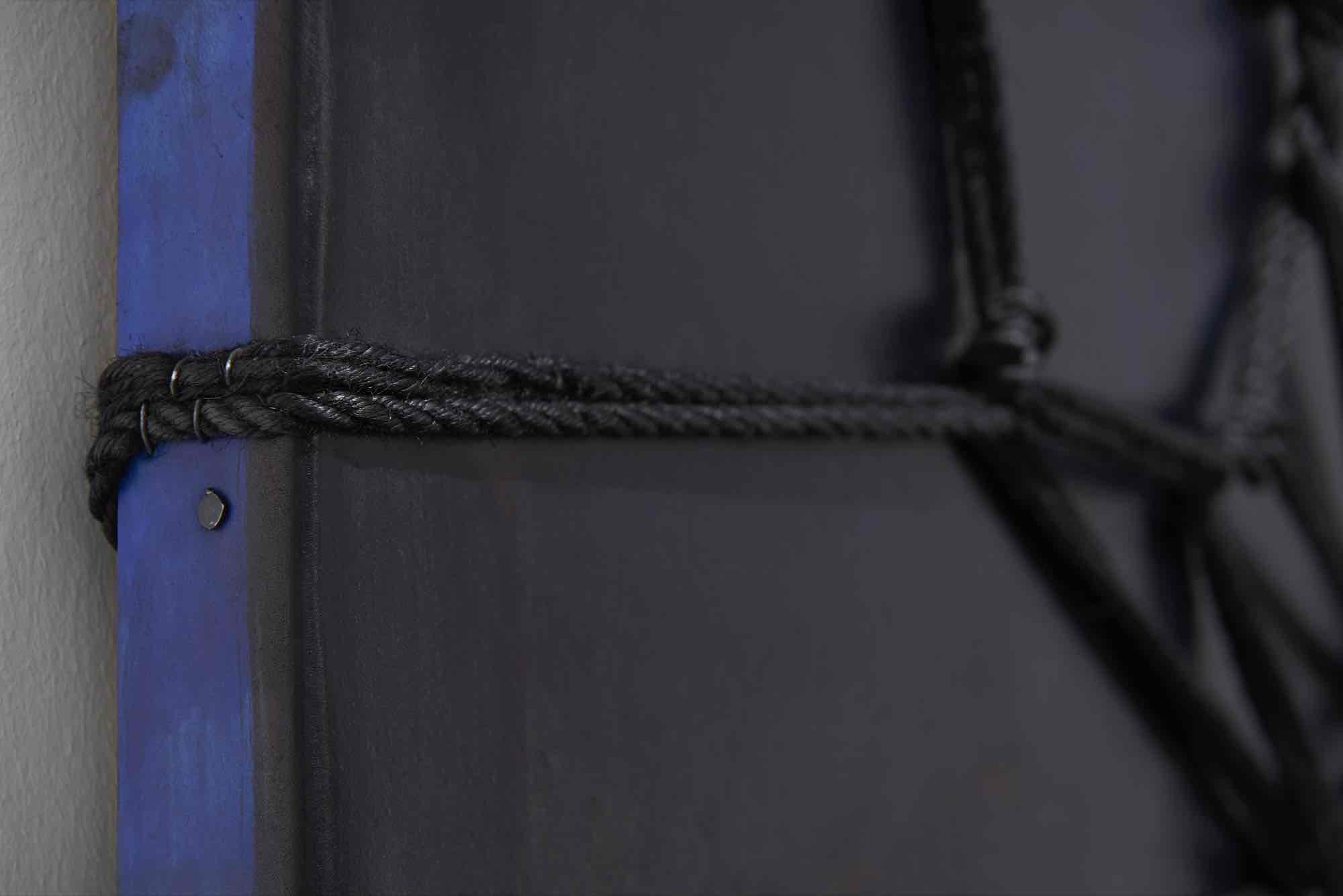
Tiona Nekkia McClodden, NEVER LET ME GO / V. irrevocable, 2023, installation view, in: Tiona Nekkia McClodden, THE POETICS OF BEAUTY WILL INEVITABLY RESORT TO THE MOST BASE PLEADINGS AND OTHER WILES IN ORDER TO SECURE ITS RELEASE, Kunsthalle Basel, 2023, photo: Philipp Hänger / Kunsthalle Basel
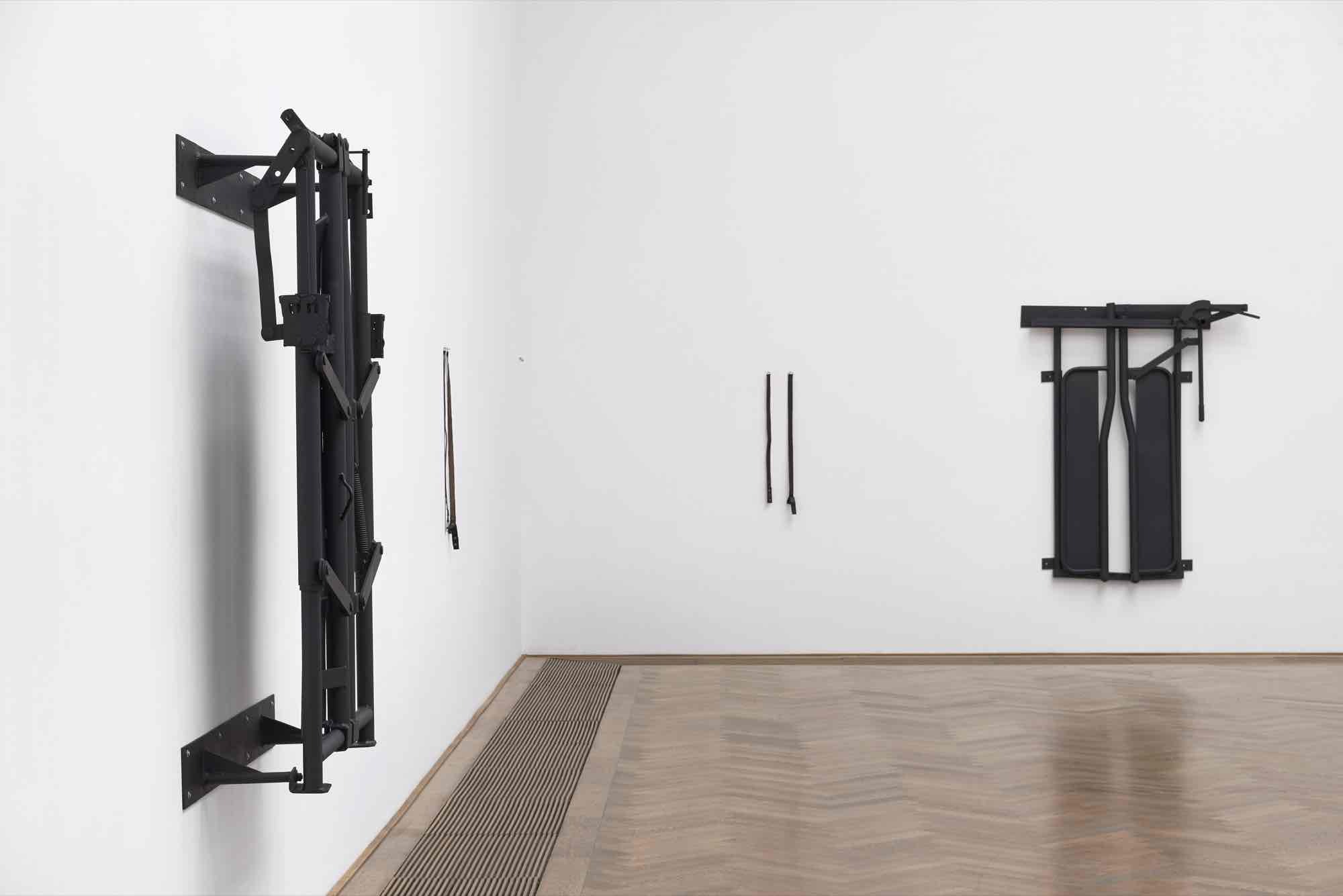
Tiona Nekkia McClodden, THE POETICS OF BEAUTY WILL INEVITABLY RESORT TO THE MOST BASE PLEADINGS AND OTHER WILES IN ORDER TO SECURE ITS RELEASE, Kunsthalle Basel, 2023, exhibition view, photo: Philipp Hänger / Kunsthalle Basel
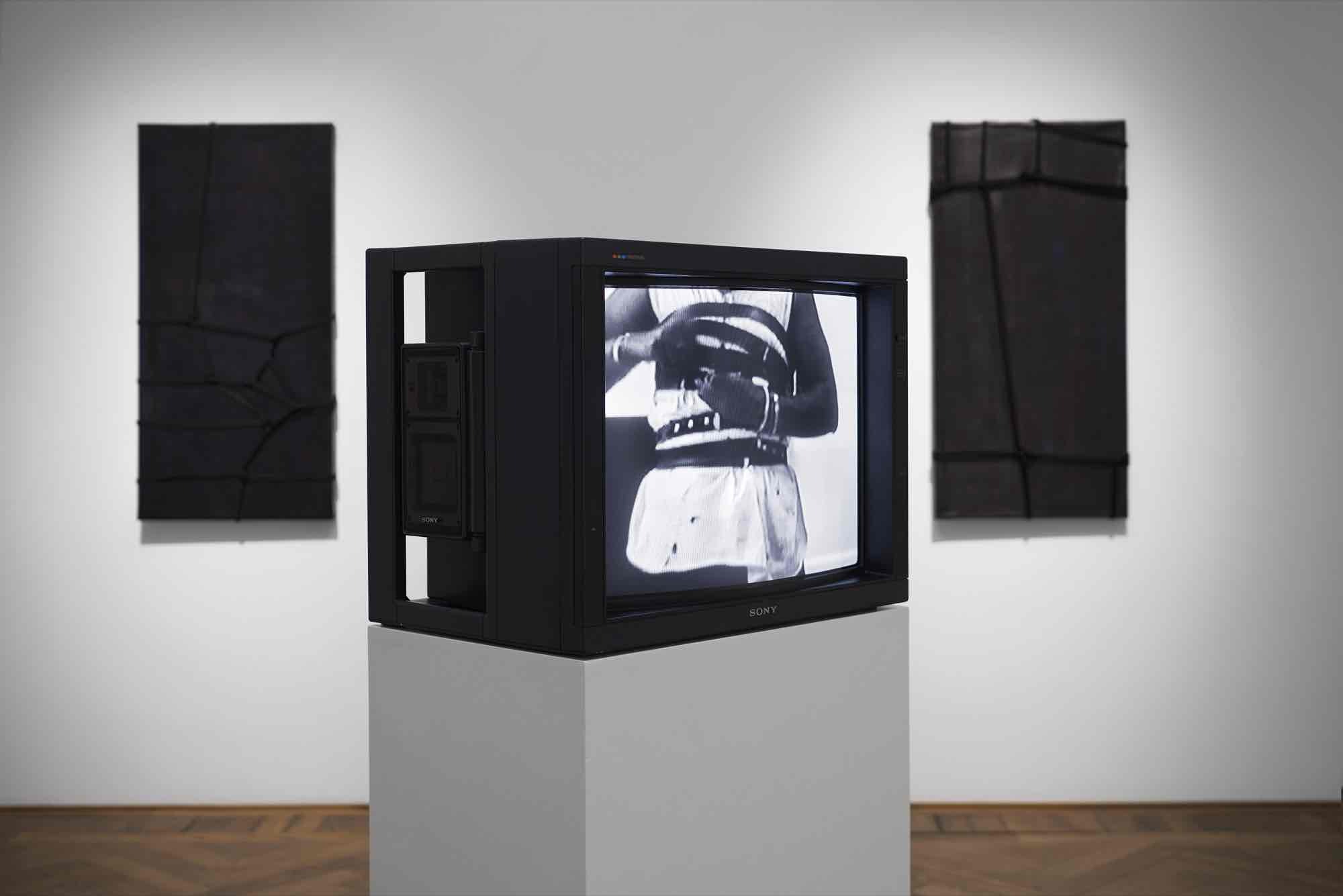
Tiona Nekkia McClodden, THE POETICS OF BEAUTY WILL INEVITABLY RESORT TO THE MOST BASE PLEADINGS AND OTHER WILES IN ORDER TO SECURE ITS RELEASE, Kunsthalle Basel, 2023, exhibition view, front: DIRE / RETENUE, 2023, photo: Philipp Hänger / Kunsthalle Basel
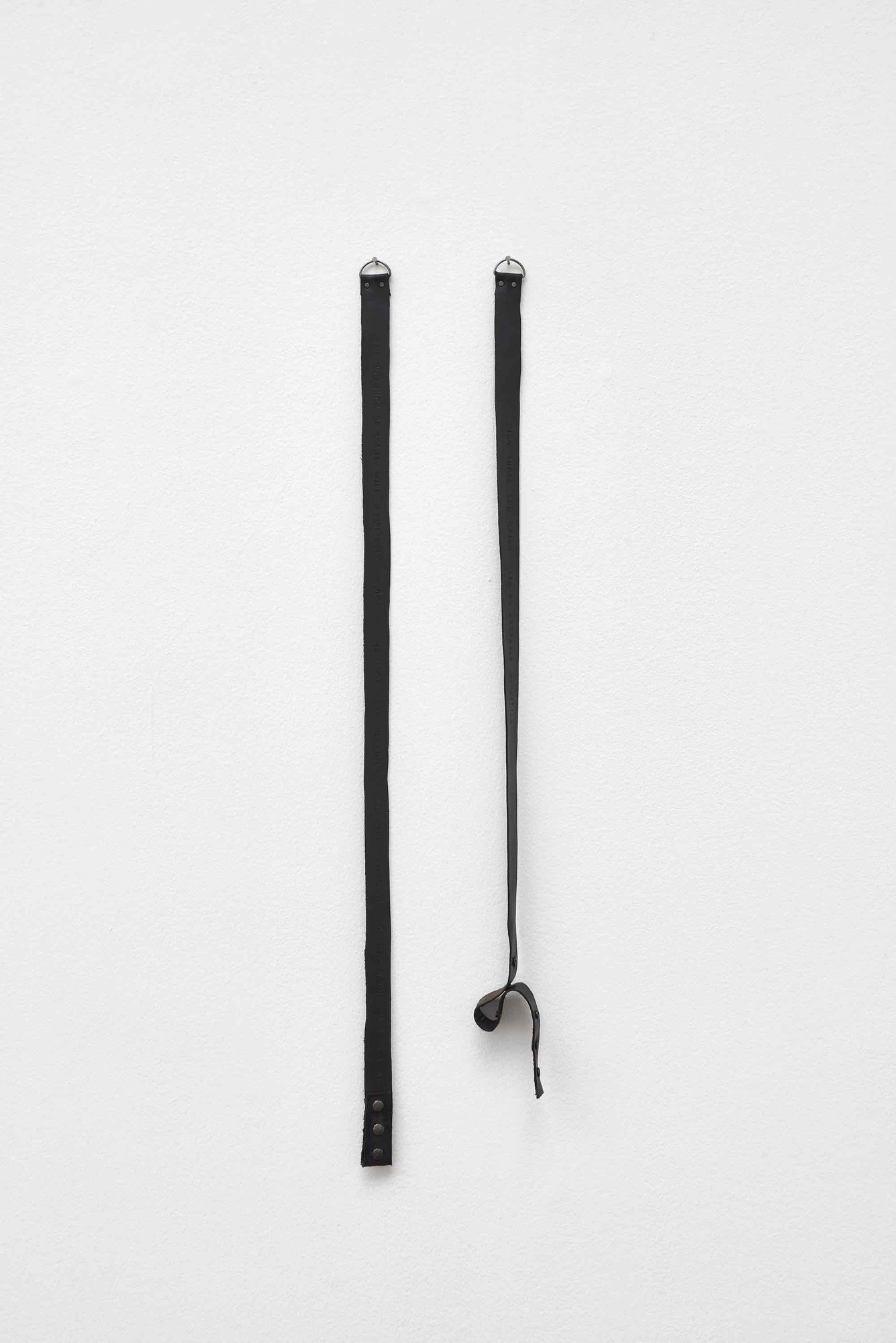
Tiona Nekkia McClodden, THRASHER [I-XVI], 2023, detail, in: Tiona Nekkia McClodden, THE POETICS OF BEAUTY WILL INEVITABLY RESORT TO THE MOST BASE PLEADINGS AND OTHER WILES IN ORDER TO SECURE ITS RELEASE, Kunsthalle Basel, 2023, photo: Philipp Hänger / Kunsthalle Basel
Take a breath. Hold it in. Exhale. Do it again. Again. And again. Suddenly, your body’s most basic act, which you probably rarely think about—although each of us typically performs it twenty-two thousand times per day—becomes conscious, evident, even pressing. We live—or die—through breath.
Tiona Nekkia McClodden’s project on view here initially developed from a less existential path of inquiry. For many years, the US-American artist has been fascinated with choke valves— devices built into various kinds of machinery that restrict air flow, either automated or operated manually. She keeps a range of palm-size choke valves in her studio, where they are literal material to think through the device’s semantics, functionality, and aesthetic dimensions. She sees beauty even in their stark utility. The artist has long free-associated them with the much larger metal contraptions used in the livestock industry known as cattle head gates. When these gates close around the neck of a bovine, they constrain its head, allowing handlers or veteri- narians easier access to administer medication, to monitor well-being, or, conversely, to kill. Not quite the same as a choke valve, but some- thing about how those gates close around a neck and throat brings the two devices together for McClodden.
For her very first institutional solo exhibition, McClodden has assembled a series of artworks born from industrial cattle head gates. Each of these detachable frontal portions of a cattle chute bears a central opening, sometimes inbuilt with lateral angled bends. Such indenta- tions create a contoured accommodation for a neck. The artist is most interested what she sees as its “point of mercy”: a place of gentleness in an otherwise brutal mechanism. To turn them into artworks, McClodden had them sand- blasted so as to be stripped of their logos, their “Made in America” declarations, and indeed all of their industrially slickified surfaces. She then primed them with black wax and handpainted them so that they give off an absorbingly dark, decidedly flat, matte blackness. She considers each a painting, and one can detect the marks of her brush. Yet: even lifted off the ground and now fixed to the wall at the standard height of a painting, they clearly exceed mere painting. Part modified readymade, part minimalist object, part tool for the disciplining of a life, they emit an inexplicable violence.
In the center of the first room sits a metal stand of the sort that usually accompanies a head gate. It, too, is gunmetal black, yet its form is less elaborate, and its function less evident than the wall works. Sitting upon it, a store-bought Hyundai-brand “extra silent” air compressor rigged with a choke valve specially made by the artist releases air seven times an hour—the exact number of times McClodden herself stops breathing each night due to sleep apnea. Here, an anonymous, industrial thing and a personal medical biography intertwine, manifest in the hiss of seeping air, accompanied by the com- pressor engine’s occasional eerie percussion.
All around this, interspersed between the head gates along the exhibition’s walls, dangle a multitude of leather straps, each embossed with a line of text. “A SINGLE MOMENT OF INATTENTION AND I FORGET TO BREATHE,” reads one of the lines. McClodden manually made the straps using the same laborand time-intensive dyeing and bootstrappolishing treatment as in the leather paintings in the room to come. The belts are made to be strapped at various pressure points across a human torso, just under the breast. They will be worn by the artist and another performer at a public event on Wednesday, June 14, 2023, at 8 p.m. A progressive layering of the straps forms part of the choreography: each addi- tion acts as a new regulation of posture and an escalating obstruction to the wearer’s capacity to breathe, let alone their ability to recite the words embossed on the straps they wear. With each tightening, the volume of their spoken words is quelled until merely a whisper remains. This recitation is a lament of vulnerability— an elegy to a threatened life.
In the next room hang five leather paintings, each crisscrossed with a variant of Japanese rope bondage as if they, too, are bodies. To make the paintings, McClodden took raw cowhides, colored them with various dyes, conditioned them to bring out the skin’s texture, and further polished them to achieve a fine, lustrous finish. From a distance, the leather surfaces appear black. But up close, they reveal shades of blue and red shimmer- ing beneath their darkened surfaces. For these works, McClodden favors a shoeshine tech- nique, partly because it requires visitors to move in a gesture not unlike what actual shoeshiners employ–a kind of swaying from side to side to catch reflections in the shoes or boots being polished. The artist deploys various levels of shine, from a dull luster to a high gloss, then wraps them with black rope according to the conventions of kinbaku-bi (literally “the beauty of tight binding”). The technique first emerged in Japan as a method of restraining captives and a form of torture, but then fed into several forms of erotic bondage popularized in the late nineteenth and early twentieth centuries. And while McClodden seems to treat her paintings like bodies, the permanence of her bondage does something impossible on living flesh: when kinbaku-bi is practiced on a person, there is a time frame to respect before it inflicts bruises or cuts off circulation.
Like a parliament of (constrained) bodies, the paintings surround a central monitor that showcases DIRE / RETENUE (Say / Withholding), a black-and-white video transferred from VHS showing the artist’s torso entirely bound by leather straps, her chest heaving in an attempt to breathe. It connects to the video in the next room, DOUBLE BIND, and, one might even imagine, to Andy Warhol’s iconic 1964 anti-film Sleep. Silent, black and white, and more than five hours long, Sleep features Warhol’s lover, the poet John Giorno, without a hint of narrative drama or climax. Giorno simply slumbers while we look on. There is something of the same resolute lack of spec- tacle in McClodden’sDOUBLE BIND, which similarly points a camera at a sleeper, although it is the artist herself in this case. Her face is covered with a mask connected to a medical device to counter her obstructive sleep apnea. One hears ambient sounds from a nearby window and the noise of the device itself, whose steady pumping allows the artist to slumber without risk of asphyxiation. If you stay with the video long enough, you might notice that about twenty minutes in, McClodden struggles for breath, and the machine attached to her ramps up its delivery of air. But the “event” feels entirely uneventful, such that watching it feels mostly like a creepy act of surveillance: we can see her struggle for air, whereas, in her sleep, she is oblivious to it (even if her body isn’t). Lying a bit like a Renaissance rendition of a dead Christ, but medically aided and entirely con- temporary, the sleeping figure connects to the questions of life and death, breath and mercy, bodily vulnerability and survival, that permeate the exhibition.
There is a strange poetry and a tremor of vio- lence to this assembly of artworks. In times of overwhelming brutality–capitalist excess, environmental crises, structural violence, systemic racism–McClodden’s focus on the flow of air is anything but benign. Hers is a quiet unraveling of our cruel present with its differing forms of everyday domination, constraint, and breaches of consent. To leave the exhibition from its last room, the artist knows, visitors must retrace their steps, passing from the compact back room into a slightly larger space, and then into the deliberately spare expanse of the main gallery, like a contracted lung expanding. Or like a choke valve holding, then exhaling, air.
Tiona Nekkia McClodden was born in 1981 in Blytheville, AR, US; she lives and works in Philadelphia, PA, US.
Tiona Nekkia McClodden’s project on view here initially developed from a less existential path of inquiry. For many years, the US-American artist has been fascinated with choke valves— devices built into various kinds of machinery that restrict air flow, either automated or operated manually. She keeps a range of palm-size choke valves in her studio, where they are literal material to think through the device’s semantics, functionality, and aesthetic dimensions. She sees beauty even in their stark utility. The artist has long free-associated them with the much larger metal contraptions used in the livestock industry known as cattle head gates. When these gates close around the neck of a bovine, they constrain its head, allowing handlers or veteri- narians easier access to administer medication, to monitor well-being, or, conversely, to kill. Not quite the same as a choke valve, but some- thing about how those gates close around a neck and throat brings the two devices together for McClodden.
For her very first institutional solo exhibition, McClodden has assembled a series of artworks born from industrial cattle head gates. Each of these detachable frontal portions of a cattle chute bears a central opening, sometimes inbuilt with lateral angled bends. Such indenta- tions create a contoured accommodation for a neck. The artist is most interested what she sees as its “point of mercy”: a place of gentleness in an otherwise brutal mechanism. To turn them into artworks, McClodden had them sand- blasted so as to be stripped of their logos, their “Made in America” declarations, and indeed all of their industrially slickified surfaces. She then primed them with black wax and handpainted them so that they give off an absorbingly dark, decidedly flat, matte blackness. She considers each a painting, and one can detect the marks of her brush. Yet: even lifted off the ground and now fixed to the wall at the standard height of a painting, they clearly exceed mere painting. Part modified readymade, part minimalist object, part tool for the disciplining of a life, they emit an inexplicable violence.
In the center of the first room sits a metal stand of the sort that usually accompanies a head gate. It, too, is gunmetal black, yet its form is less elaborate, and its function less evident than the wall works. Sitting upon it, a store-bought Hyundai-brand “extra silent” air compressor rigged with a choke valve specially made by the artist releases air seven times an hour—the exact number of times McClodden herself stops breathing each night due to sleep apnea. Here, an anonymous, industrial thing and a personal medical biography intertwine, manifest in the hiss of seeping air, accompanied by the com- pressor engine’s occasional eerie percussion.
All around this, interspersed between the head gates along the exhibition’s walls, dangle a multitude of leather straps, each embossed with a line of text. “A SINGLE MOMENT OF INATTENTION AND I FORGET TO BREATHE,” reads one of the lines. McClodden manually made the straps using the same laborand time-intensive dyeing and bootstrappolishing treatment as in the leather paintings in the room to come. The belts are made to be strapped at various pressure points across a human torso, just under the breast. They will be worn by the artist and another performer at a public event on Wednesday, June 14, 2023, at 8 p.m. A progressive layering of the straps forms part of the choreography: each addi- tion acts as a new regulation of posture and an escalating obstruction to the wearer’s capacity to breathe, let alone their ability to recite the words embossed on the straps they wear. With each tightening, the volume of their spoken words is quelled until merely a whisper remains. This recitation is a lament of vulnerability— an elegy to a threatened life.
In the next room hang five leather paintings, each crisscrossed with a variant of Japanese rope bondage as if they, too, are bodies. To make the paintings, McClodden took raw cowhides, colored them with various dyes, conditioned them to bring out the skin’s texture, and further polished them to achieve a fine, lustrous finish. From a distance, the leather surfaces appear black. But up close, they reveal shades of blue and red shimmer- ing beneath their darkened surfaces. For these works, McClodden favors a shoeshine tech- nique, partly because it requires visitors to move in a gesture not unlike what actual shoeshiners employ–a kind of swaying from side to side to catch reflections in the shoes or boots being polished. The artist deploys various levels of shine, from a dull luster to a high gloss, then wraps them with black rope according to the conventions of kinbaku-bi (literally “the beauty of tight binding”). The technique first emerged in Japan as a method of restraining captives and a form of torture, but then fed into several forms of erotic bondage popularized in the late nineteenth and early twentieth centuries. And while McClodden seems to treat her paintings like bodies, the permanence of her bondage does something impossible on living flesh: when kinbaku-bi is practiced on a person, there is a time frame to respect before it inflicts bruises or cuts off circulation.
Like a parliament of (constrained) bodies, the paintings surround a central monitor that showcases DIRE / RETENUE (Say / Withholding), a black-and-white video transferred from VHS showing the artist’s torso entirely bound by leather straps, her chest heaving in an attempt to breathe. It connects to the video in the next room, DOUBLE BIND, and, one might even imagine, to Andy Warhol’s iconic 1964 anti-film Sleep. Silent, black and white, and more than five hours long, Sleep features Warhol’s lover, the poet John Giorno, without a hint of narrative drama or climax. Giorno simply slumbers while we look on. There is something of the same resolute lack of spec- tacle in McClodden’sDOUBLE BIND, which similarly points a camera at a sleeper, although it is the artist herself in this case. Her face is covered with a mask connected to a medical device to counter her obstructive sleep apnea. One hears ambient sounds from a nearby window and the noise of the device itself, whose steady pumping allows the artist to slumber without risk of asphyxiation. If you stay with the video long enough, you might notice that about twenty minutes in, McClodden struggles for breath, and the machine attached to her ramps up its delivery of air. But the “event” feels entirely uneventful, such that watching it feels mostly like a creepy act of surveillance: we can see her struggle for air, whereas, in her sleep, she is oblivious to it (even if her body isn’t). Lying a bit like a Renaissance rendition of a dead Christ, but medically aided and entirely con- temporary, the sleeping figure connects to the questions of life and death, breath and mercy, bodily vulnerability and survival, that permeate the exhibition.
There is a strange poetry and a tremor of vio- lence to this assembly of artworks. In times of overwhelming brutality–capitalist excess, environmental crises, structural violence, systemic racism–McClodden’s focus on the flow of air is anything but benign. Hers is a quiet unraveling of our cruel present with its differing forms of everyday domination, constraint, and breaches of consent. To leave the exhibition from its last room, the artist knows, visitors must retrace their steps, passing from the compact back room into a slightly larger space, and then into the deliberately spare expanse of the main gallery, like a contracted lung expanding. Or like a choke valve holding, then exhaling, air.
Tiona Nekkia McClodden was born in 1981 in Blytheville, AR, US; she lives and works in Philadelphia, PA, US.
